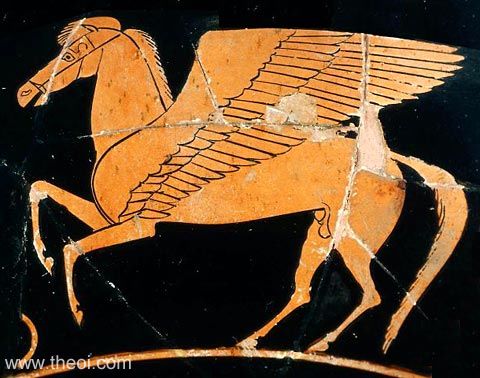Man vs Horse: Pheidippides and his Missing Mount April 29, 2015
Author: Beach Combing | in : Ancient , trackback***Inspired by Little Miss Beach and Tacitus at Empire*** http://detritusofempire.blogspot.it/
When Beach recently described, at table, Pheidippides’ heroic 300 mile round trip from Athens to Sparta little Miss Beach looked at her father contemptuously and asked ‘why didn’t he just get on a horse?’ Beach prepared to gently put his daughter down, not wanting to crush her too cruelly with his professorial might, but as he stuttered out a reply he realized that the six year old had a point. Why had the Athenians entrusted the most important message in the history of the city to a runner when surely a man on a horse would have made quicker progress? Beach kept his parental prestige (just) by describing the difficulty of riding horses through Arcadia, and then sprinted to his library to look for a more convincing answer. The terrain explanation works, in fact, relatively well. There are some rough lands between Athens and Sparta, ravines and steep climbs, though there would have been, almost certainly a well established path, between the two jewels of Greece? However, a much better explanation is the limitations of the horse. A horse and rider can probably ride 40 miles in a day on good terrain, starting early and finishing late and do so on several successive days. It would certainly be possible to push this up under desperate circumstances by getting a light rider, jettisoning all luggage, and relying on a fast horse. Beach has taken as an extreme guide The Tevis Cup which is a Californian hundred-mile cross-country horse race. Every year the winner comes in at about twelve hours: the absolute fastest was just under eleven hours in 1981. Let’s say, for the sake of argument, that the ride from Athens to Sparta would have been comparable in terms of terrain, Pheidippides would have had to do fifty miles more than the Tevis riders. We established in a previous post that Pheidippides did probably about 150 miles in 35 hours, or perhaps as many as ten hours fewer. A hundred miles on Tevis in 12 hours was achieved by driving the horses to exhaustion: they will have been good to drop by the end of the race and will have had a couple of very easy days after (we hope!). It is not just a question, then, of extrapolating by plus 50%. 150 miles might in the end have taken twenty hours, which is about the same time as the world record for the Spartathlon (modern attempts to do Pheidippides’ run between Athens and Sparta). Of course, the territory that Pheidippides went over looks rather worse than the wild but well structured route that the Tevis follows. It is also true, however, that Pheidippides could have mixed and matched. He could have ridden a horse for, say, the first twenty miles and got down butt sore but full of energy to run. He could have brought three horses along and ridden them by turns, letting them go as they became tired and then run. (Perhaps he did…) Roman and Persian couriers, never mind the Pony Express, worked because there were relays of horses to change. What really shocked Beach is that if you are travelling with one horse over one or two or three hundred miles, a runner would not necessarily be slower or at least not much slower than a mount. In other terms, a horse will thrash a fast human over a hundred yards, it would beat a human convincingly over a mile, it would win a marathon too… But from there on one horse against one human (particularly a desperate, driven human) becomes more evenly matched. Other horse-human stats: drbeachcombing AT yahoo DOT com
PS One last thought, the idea that the Athenians sent a runner from Marathon to Athens (over easier land) just doesn’t stand up if there had been a single horse around.
31 May 2015: Chris S writes ‘In Anderson’s Ancient Greek Horsemanship (https://tinyurl.com/kx45glc page 81), Greeks went bareback or used a thin saddle cloth. Riding bareback is a literal pain in the tuchus. A cursory Google search reveals many riders get sore without the comfort of a saddle, along with some accounts of horses being injured. Of humorous interest is the story told in Maus about a lost pillow from 1914. (Maus, page 35). Someone rode past us and told us that we’d dropped a pillow a few miles back. A guy traveling to Amstow picked it up. Imagine – my father never rode a horse before, but he unhitched one from the wagon and rode towards Amstow. We waite and waited… Mother started crying, “Surely he fell and got killed!” She had begged him to “Let the pillow go and take all our troubles with it!” The horse was bony and didn’t have a saddle… Finally, late that night, father rode back with the pillow under his bloody tuchus. So, father got his pillow back, but he couldn’t sit down for the rest of the war!” I’m no farrier, but I believe even on a well-fed horse ridden bareback over 100 miles would be a punishing experience for both parties.’
Thanks Chris!



